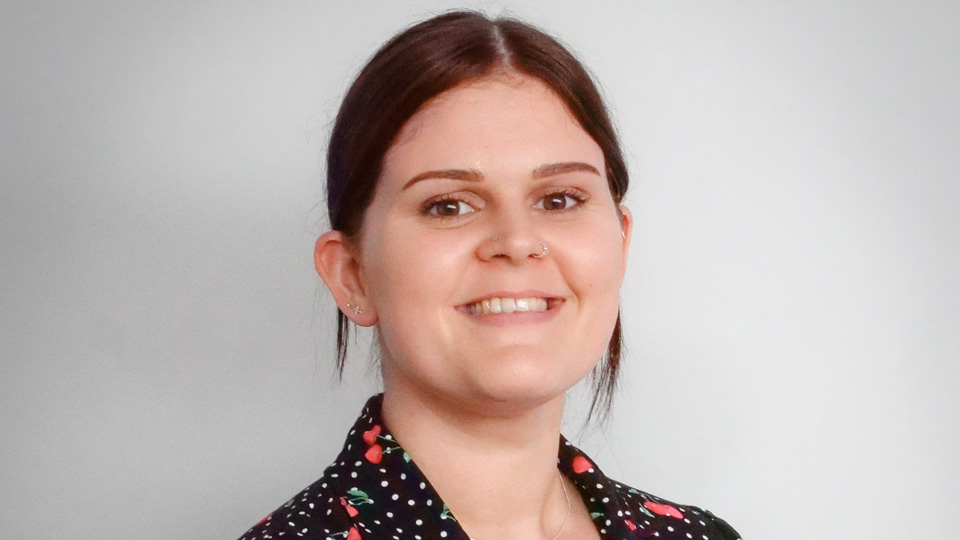- OT
- Life in practice
- Practitioner stories
- The right care at the right time
Practice team guide
The right care at the right time
From asking the right questions to identifying clinical red flags, OT explores the role of triage in optometry practices

06 October 2023
A patient walking through the practice door – or picking up the phone to make an appointment – may report any number of symptoms.
Although optometrists play a key role in deciphering the signs and symptoms a patient presents with, what happens outside the consulting room door is also important.
They are responsible for making sure that the patients are seen in a timely manner – and that clinical staff are made aware of any potentially troubling symptoms.
OT speaks with practice team members for their guidance on how to approach triage in practice – and the clinical red flags to look out for.
First contact

“It is important that everyone has basic understanding of how to recognise and prioritise patients based on their symptoms,” he emphasised.
Following on from the information gathered in this initial conversation, the team can organise a phone call, video assessment or an emergency visit to the practice.
Tompkins, Knight & Son has organised both in-house training on urgent eye conditions for the whole practice team as well as training from external providers.
Patel emphasised that triage is important for patient care and practice flow.
“When a patient gets in touch with the practice, particularly with a concern about their eyes, it is reassuring when the first point of contact can review their symptoms and guide them on the best course of action,” he said.
Bespoke forms
Optometrist Pretty Basra shared with OT that bespoke triage forms are used at Edwards & Walker Opticians to record relevant information, grade the level of urgency and book patients in promptly.
“I normally review this form to ensure patients are being seen in a timely manner,” Basra shared.
Staff training and an active minor eye conditions service (MECS) clinic means that all staff members are familiar with the red flags to listen out for and which patients should be prioritised.

Asking the right questions can help when a patient describes vague symptoms.
“The triage forms are created so that as much relevant information as possible can be extracted in a short space of time,” Basra said.
Practice staff will seek advice from Basra if the responses on the triage form are unclear or if they think the patient needs to be seen urgently in clinic but there is limited capacity on the same day.
“They would then ask if I can find some time in the diary on the day to see the patient,” Basra explained.
Observing the patient journey through the practice’s MECS clinic gives staff members practical experience of a wide range of eye conditions.
“I often will involve team members in the care episode if there is irrigation, foreign body removal or simply as a comforting hand to hold. Each team member is invested in the patient from the minute they take the triage details,” Basra said.
A consistent approach
Peter Ivins Eye Care also uses a standardised form to structure the triage conversation.
“This not only ensures consistency in our approach and consistency in the information gathered, but also ensures patients are prioritised appropriately,” optometrist and practice director, Craig McArthur, shared.
The information gathered enables the team to categorise each patient as low, medium or high urgency. High urgency patients will be allocated a same-day appointment, while an optometrist will advise how soon those categorised as low or medium urgency should be examined.
Red flags
Symptoms that should trigger a priority appointment
- Sudden vision loss (with or without pain)
- A painful eye
- Flashes and floaters
- New onset double vision.
“This is particularly useful for our less mobile patients or for patients living rurally,” McArthur said.
He highlighted the importance of creating a collaborative environment between optometrists, dispensing opticians and clinical support staff within practice.
“This is particularly important in triaging of emergency patients. We encourage open dialogue with an ‘if in doubt, feel free to ask’ policy in place,” McArthur emphasised.
He added that the team aims to continually improve its triage process.
“We debrief afterwards to ensure everyone learns from any successes or failures of triaging. Reflect, refine and go again the next day,” McArthur highlighted.
Peter Ivins Eye Care offers a range of specialist clinics that can book up around five weeks in advance.
However, McArthur highlighted that the team ensures that daily emergency appointments are retained.
“Effective triaging of patients allows us to fill these appointments with the most appropriate patient whilst servicing our various other clinics,” he said.
Sight-saving care
Optometrist and director, Lynne Fernandes, highlighted the importance of effective triage for her Bristol practices, noting that extended services – such as MECS and CUES – are not available in the area.
“It's so important to triage accurately and quickly so that the patient can be directed appropriately,” she said.
After information is entered into a triage form, the form is reviewed by an optometrist who decides whether the patient needs to be seen on the same day, within two days or over the next week.
Optical adviser and communications lead, Stacey Semmens, answers many of the calls that come through the practice.

“If there is a symptom that raises concern, we go on to ask further questions. We all have training and have a triage form we follow,” Semmens explained.
Gathering all the relevant information helps optometrists to know why the patient is attending the clinic.
Semmens also makes an effort to reassure the patient that they will receive a thorough examination of their symptoms – and highlight the time frame they should be seen within.
“It's so important that we triage so all relevant information is given to our optometrists. You could potentially be saving a patient’s sight,” she emphasised.


Comments (0)
You must be logged in to join the discussion. Log in